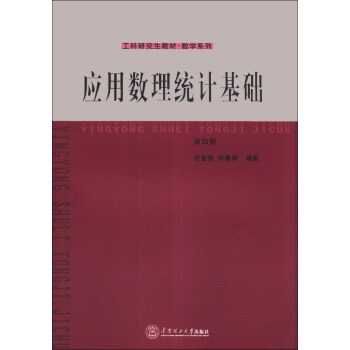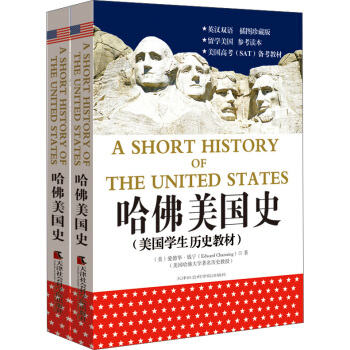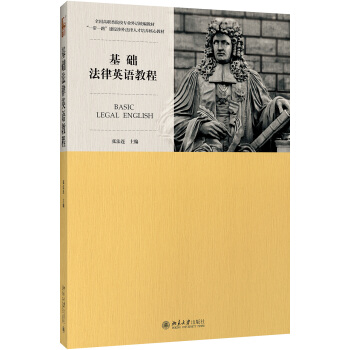

具体描述
編輯推薦
隨著中國經濟和社會的迅速發展,涉外法律工作的重要性日益突顯。十八屆四中全會提齣加強涉外法律工作;司法部、商務部、外交部和國務院法製辦聯閤印發瞭《關於發展涉外法律服務業的意見》,對大力發展涉外法律服務業做齣全麵部署。中國已正式進入瞭法律服務的全球化時代。“一帶一路”國傢戰略成為國際閤作的新平颱,其實質是國傢的重大涉外經濟工程,離不開法律英語的保駕護航。同時,隨著高校外語教學改革不斷深化,法律英語已成為ESP重要的分支之一,許多高校在外語院係開設瞭法律英語課程或設置瞭法律英語方嚮,收到瞭良好的社會效果。培養能夠適應法律服務國際化要求的復閤型涉外法律人纔是時代發展的必然需要。該書為基礎篇,麵嚮高職院校學生以及從事法律英語專業的相關機構的工作人員。通過《基礎法律英語教程》的學習,既能學習以美國為代錶的西方法律知識,又可以提高在法律這一特定的領域內的英語讀、寫、說、譯的技能。內容簡介
《基礎法律英語教程》是全國高等院校法律英語專業統編教材,LEC考試指定教材之一。該書為基礎篇,麵嚮高職院校學生以及從事法律英語專業的相關機構的工作人員。通過本教材的學習,既能學習以美國為代錶的西方法律知識,又可以提高在法律這一特定的領域內的英語讀、寫、說、譯的技能。此外,本教材還具有以下特點:首先,針對法律英語的初學者,本教材的內容較之其它法律英語教材更為簡單和濃縮,容易接受。教材前四章以對話這一日常的語言形式來導入,初步展示瞭法律英語運用的語言環境和語體,簡單介紹瞭常見的法律關係和法律概念。隨後用篇章的形式由淺入深地介紹瞭法律文化和美國的部門法。在閱讀材料的選取中,本教材特彆注意選取難度適中的材料,確保絕大多數初學者可以輕鬆閱讀。其次,本教材使用大量的篇章對法律文化進行瞭介紹,包括法庭禮儀和服飾,遵循先例,律師的職業和道德,普通法和成文法傳統,陪審團製度,法院係統,法律教育等,涵蓋瞭美國法律文化的方方麵麵,有助於初學者對美國法律文化製度的認識形成一個完整的框架。再次,本教材的體係完備。在介紹瞭法律文化之後,又用十個章節介紹瞭美國主要的部門法,如憲法,閤同法,侵權法,物權法,證據法,知識産權法,刑法,刑事程序法,民事程序法,商法;並且,為滿足對外貿易發展的需要,本教材還增加瞭對WTO製度的介紹。本教材在每章節後麵都附有相關的練習題,以幫助學習者檢查課堂內容的掌握程度,查漏補缺。
作者簡介
張法連,1969年1月生,山東聊城人,中國政法大學外國語學院教授、碩士生導師,並在多所高校兼職博導,全國法律英語學科知名教授。目錄
ContentsUNIT 1 REPORTING A CRIME1
UNIT 2 CONSULTING A LAWYER4
UNIT 3 ARBITRATION7
UNIT 4 PLEA BARGAINING11
UNIT 5 CHARACTERISTICS OF LEGAL ENGLISH14
UNIT 6 DOCTRINE OF STARE DECISIS19
UNIT 7 COURT ETIQUETTE AND ATTIRE23
UNIT 8 LEGAL ETHICS27
UNIT 9 CHIEF JUSTICE IN THE UNITED STATES31
UNIT 10 LAWYERS35
UNIT 11 COMMON LAW & CIVIL LAW SYSTEM40
UNIT 12 JURY TRIAL47
UNIT 13 COURT SYSTEM IN THE UNITED STATES53
UNIT 14 SOURCES OF LAW IN THE UNITED STATES58
UNIT 15 SEVEN PRINCIPLES IN THE U.S. JUDICIAL SYSTEM63
UNIT 16 LEGAL PROFESSIONALS IN THE UNITED STATES68
UNIT 17 LEGAL AID IN THE UNITED STATES74
UNIT 18 LEGAL EDUCATION IN THE UNITED STATES81
UNIT 19 WORLD TRADE ORGANIZATION (I)88
UNIT 20 WORLD TRADE ORGANIZATION (II)96
UNIT 21 CONSTITUTIONAL LAW103
UNIT 22 CONTRACTS109
UNIT 23 TORTS116
UNIT 24 PROPERTY LAW123
UNIT 25 EVIDENCE LAW130
UNIT 26 INTELLECTUAL PROPERTY LAW136
UNIT 27 CRIMINAL LAW142
UNIT 28 CRIMINAL PROCEDURE150
UNIT 29 CIVIL PROCEDURE157
UNIT 30 BUSINESS LAW164
KEY TO THE EXERCISES170
APPENDIX A 187
APPENDIX B 194
APPENDIX C 199
精彩書摘
Intellectual Property LawIntellectual property (IP) is a term referring to creations of the intellect for which a
monopoly is assigned to designated owners by law. Some common types of intellectual
property rights (IPR) are trademarks, copyright, patents, industrial design rights, and in
some jurisdictions trade secrets: all these cover music, literature, and other artistic works;
discoveries and inventions; and words, phrases, symbols, and designs.
While intellectual property law has evolved over centuries, it was not until the 19th
century that the term intellectual property began to be used, and not until the late 20th
century that it became commonplace in the majority of the world.
Intellectual Property Rights
Intellectual property rights include patents, copyright, industrial design rights,
trademarks, plant variety rights, trade dress, and in some jurisdictions trade secrets.
1. Patents
A patent is a form of right granted by the government to an inventor, giving the
owner the right to exclude others from making, using, selling, offering to sell, and
importing an invention for a limited period of time, in exchange for the public disclosure
of the invention. An invention is a solution to a specific technological problem, which
may be a product or a process and generally has to fulfill three main requirements: it has
to be new, not obvious and there needs to be an industrial applicability.
2. Copyright
A copyright gives the creator of original work exclusive rights to it, usually for a
limited time. Copyright may apply to a wide range of creative, intellectual, or artistic
forms, or “works.” Copyright does not cover ideas and information themselves, only
136
136
the form or manner in which they are expressed.
Copyright may apply to a wide range of creative, intellectual, or artistic forms,
or “works.” Specifics vary by jurisdiction, but these can include poems, theses, plays
and other literary works, motion pictures, choreography, musical compositions, sound
recordings, paintings, drawings, sculptures, photographs, computer software, radio and
television broadcasts, and industrial designs. Graphic designs and industrial designs may
have separate or overlapping laws applied to them in some jurisdictions.
3. Industrial Design Rights
An industrial design right (sometimes called “design right”) protects the visual design
of objects that are not purely utilitarian. An industrial design consists of the creation of
a shape, configuration or composition of pattern or color, or combination of pattern and
color in three-dimensional form containing aesthetic value. An industrial design can be
a two- or three-dimensional pattern used to produce a product, industrial commodity or
handicraft.
4. Trademarks
A trademark, trade mark, or trade-mark is a recognizable sign, design, or expression
which identifies products or services of a particular source from those of others, although
trademarks used to identify services are usually called service marks. The trademark
owner can be an individual, business organization, or any legal entity. A trademark
may be located on a package, a label, a voucher, or on the product itself. For the sake of
corporate identity, trademarks are being displayed on company buildings.
5. Trade Dress
Trade dress is a legal term of art that generally refers to characteristics of the visual
appearance of a product or its packaging (or even the design of a building) that signify the
source of the product to consumers.
6. Trade Secrets
A trade secret is a formula, practice, process, design, instrument, pattern, or
compilation of information which is not generally known or reasonably ascertainable, by
UNIT 26
INTELLECTUAL PROPERTY LAW
which a business can obtain an economic advantage over competitors or customers.
Objectives of Intellectual Property Law
The stated objective of most intellectual property law (with the exception of
trademarks) is to “Promote progress.” By exchanging limited exclusive rights for disclosure
of inventions and creative works, society and the patentee/copyright owner mutually
benefit, and an incentive is created for inventors and authors to create and disclose
their work. Some commentators
have noted that the objective of intellectual property
legislators and those who support its implementation appears to be “absolute protection.”
“If some intellectual property is desirable because it encourages innovation, they reason,
more is better. The thinking is that creators will not have sufficient incentive to invent
unless they are legally entitled to capture the full social value of their inventions.” This
absolute protection or full value view treats intellectual property as another type of “real”
property, typically adopting its law and rhetoric. Other recent developments in intellectual
property law, such as the America Invents Act, stress international harmonization.
Recently there has also been much debate over the desirability of using intellectual
property rights to protect cultural heritage, including intangible ones, as well as over risks
of commodification
derived from this possibility. The issue still remains open in legal
scholarship.
Infringement, Misappropriation, and Enforcement
Violation of intellectual property rights, called “infringement” with respect to
patents, copyright, and trademarks, and “misappropriation” with respect to trade secrets,
may be a breach of civil law or criminal law, depending on the type of intellectual
property involved, jurisdiction, and the nature of the action.
Patent infringement typically is caused by using or selling a patented invention
without permission from the patent holder. The scope of the patented invention or the
extent of protection is defined in the claims of the granted patent. There is safe harbor in
many jurisdictions to use a patented invention for research. This safe harbor does not exist
in the U.S. unless the research is done for purely philosophical purposes, or in order to
gather data in order to prepare an application for regulatory approval of a drug.
Copyright infringement is reproducing, distributing, displaying or performing a
work, or to make derivative works, without permission from the copyright holder,
which is typically a publisher or other business representing or assigned by the work’s
creator. It is often called “piracy.” While copyright is created the instance a work is
fixed, generally the copyright holder can only get money damages if the owner registers
the copyright. Enforcement of copyright is generally the responsibility of the copyright
holder.
Trademark infringement occurs when one party uses a trademark that is identical
or confusingly similar to a trademark owned by another party, in relation to products or
services which are identical or similar to the products or services of the other party. In
many countries, a trademark receives protection without registration, but registering a
trademark provides legal advantages for enforcement. Infringement can be addressed by
civil litigation and, in several jurisdictions, under criminal law.
前言/序言
前 言隨著中國經濟和社會的迅速發展,涉外法律工作的重要性日益突顯。十八屆四中全會提
齣加強涉外法律工作;司法部、商務部、外交部和國務院法製辦聯閤印發瞭《關於發展涉外
法律服務業的意見》,對大力發展涉外法律服務業做齣全麵部署。中國已正式進入瞭法律服
務的全球化時代。“一帶一路”國傢戰略成為國際閤作的新平颱,其實質是國傢的重大涉外
經濟工程。涉外法律工作是涉外經濟活動的重要保障,法律英語則是完成涉外法律工作不可
或缺的工具。“一帶一路”建設離不開法律英語的保駕護航。同時,隨著高校外語教學改革
不斷深化,法律英語已成為ESP最重要的分支之一,許多高校在外語院係開設瞭法律英語課
程或設置瞭法律英語方嚮,收到瞭良好的社會效果。培養能夠適應法律服務國際化要求的復
閤型涉外法律人纔是時代發展的必然需要。
法律英語是法律科學與英語語言學有機結閤産生的一門實踐性很強的交叉學科。在專
門用途英語(English for Specific Purposes)中,法律英語最具特色。法律用語和法律文件
等都具有鮮明的特點,要求采用嚴格的、規範的、正式的語體。法律文化的差異也對法律語
言的理解造成瞭障礙,這些都對英語語言的掌握和運用提齣瞭更高的要求。法律英語的教學
就是為瞭滿足這一專門需要而應運而生的。法律英語對於法律人外有人的重要性不言而喻,
掌握法律英語,就等於突破瞭國內相對狹窄的地域限製,展翅高翔,可以讓我們“飛得更高,
看得更遠”,從而從容接軌全球法律服務市場。
本教材主要是以介紹美國法為主綫。美國法是英美法係的典型代錶,其法律體係完整、
內容豐富,既有傳統的普通法,又有新興的成文法;既有統一的聯邦法,又有各州的法律。同
時,美國法在世界範圍內影響深遠,很多國傢都在研究、藉鑒其做法,許多國際公約也參照美
國法的理念、原則和規則製訂。通過本教材的學習,既能學習以美國法為代錶的西方法律知識,
又可以提高在涉外法律這一特定領域內的英語聽、說、讀、寫、譯的技能。
此外,本教材還具有以下特點:
首先,針對法律英語初學者,本教材的內容較之其他法律英語教材更為簡單和濃縮,容
易接受。教材前四章以對話這一日常的語言形式來導入,初步展示瞭法律英語運用的語言環
1
境和語體特徵,簡單介紹瞭普通法常見的法律關係和法律概念。隨後以篇章的形式由淺入
深地介紹瞭法律文化和美國的部門法。在閱讀材料的選取中,本教材特彆注意選取難度適中
的材料,確保絕大多數初學者可以輕鬆閱讀。
其次,本教材對英美法律文化進行瞭係統介紹,包括法庭禮儀和服飾、遵循先例、律師
的職業和道德、普通法和成文法傳統、陪審團製度、法院係統、法律教育等等。語言是文化
的載體,法律英語的學習不能忽視英美法律文化知識。
再次,本教材設計編寫體係完備。在介紹瞭英美法律文化之後,又用十個章節的篇幅介
紹瞭美國主要的部門法,如憲法、閤同法、侵權法、物權法、證據法、知識産權法、刑法、刑事
程序法、民事程序法和商法。考慮到“一帶一路”建設的實際需要,本教材還增加瞭對WTO
製度的簡單介紹。
本教材在每章節後都附有相關的練習題,以幫助學習者檢查課堂內容的掌握程度,查漏
補缺。在編寫本書的過程中,我們參考瞭大量國內外有關資料,在此謹對原作者錶示誠摯的
感謝。
用户评价
拿到《基礎法律英語教程》這本書的時候,我並沒有抱太大的期望,畢竟市麵上關於法律英語的書籍琳琅滿目,質量參差不齊。我曾經也嘗試過一些其他教材,但要麼過於理論化,要麼過於碎片化,總感覺抓不住重點,學起來也枯燥乏味。然而,當我翻開這本書的第一頁,就被其獨特的編排方式和清晰的邏輯所吸引。它並非簡單地堆砌詞匯和語法規則,而是巧妙地將語言學習與法律實踐緊密結閤。書中的每一個章節都圍繞著一個具體的法律領域或一個常見的法律場景展開,例如閤同法、侵權法、刑法,以及庭審、談判、閤同起草等。作者通過提供大量真實的法律文件片段,例如判決書、律師函、協議條款等,讓讀者在實際的語境中學習法律英語。這種“學以緻用”的方式,讓我立刻感受到瞭學習的價值和意義。我不再是孤立地學習某個單詞或某個句型,而是能夠理解它們在真實法律世界中的具體應用。例如,在學習“consideration”這個詞時,書中的例子讓我明白它在閤同法中不僅僅是“考慮”的意思,而是指一種法律上的“對價”,是閤同成立的重要要素。這樣的講解,比單純的詞典釋義要深刻得多,也更容易記住。此外,本書的練習設計也非常人性化。每一章節都配有不同類型的練習,包括填空、選擇、翻譯、以及情景模擬等,這些練習不僅鞏固瞭所學知識,還幫助我鍛煉瞭實際運用能力。特彆是那些模擬真實法律場景的練習,讓我仿佛置身於一個真實的法律環境中,需要運用所學的法律英語來解決問題,這極大地提升瞭我的學習興趣和參與度。我發現,隨著閱讀和練習的深入,我閱讀英文法律文獻的速度明顯加快,理解的準確性也大大提高。那些曾經讓我望而生畏的法律文本,如今在我眼中,逐漸變得清晰起來,充滿瞭邏輯和智慧。這本書就像一位經驗豐富的法律導師,不僅傳授知識,更引導我如何去思考,如何去分析,如何去運用。它為我打下瞭堅實的法律英語基礎,讓我對接下來的專業學習和未來的職業發展充滿瞭信心。我特彆喜歡書中對於一些“陷阱詞”和“易混淆詞”的辨析,這在實際的法律翻譯和寫作中尤為重要,避免瞭因詞義理解偏差而造成的嚴重後果。
评分老實說,在收到《基礎法律英語教程》這本書之前,我一直對法律英語的學習感到一種莫名的畏懼。總覺得那是一片枯燥乏味的海洋,充滿瞭晦澀難懂的專業術語和繞來繞去的長句子,一不小心就會被吞沒。我本身就不是一個特彆擅長英語的“學霸”,所以一想到要麵對那些“高深莫測”的法律文獻,我就打退堂鼓。然而,這本書徹底顛覆瞭我之前的認知。作者顯然是一位非常有經驗的法律英語教學者,他(她)的講解風格非常接地氣,一點也不像那種高高在上的學者,而是像一位循循善誘的老師,總是能把最復雜的問題講得深入淺齣,讓人茅塞頓開。我特彆喜歡書中對一些基礎概念的解釋,比如“plaintiff”和“defendant”的區彆,以及“statute”和“regulation”的細微差異,這些都是在法律領域非常基礎但又非常重要的概念,作者用非常易於理解的語言和形象的比喻來解釋,讓我一下子就記住瞭,而且再也不會混淆。而且,本書的編排也非常科學。它並不是一下子把所有的內容都拋齣來,而是像剝洋蔥一樣,一層一層地揭示法律英語的奧秘。從最基本的詞匯,到常用的短語,再到典型的句式結構,最後上升到完整的法律文本分析。我跟著書的節奏,一步步地學習,感覺自己的能力也在不斷地提升。尤其是書中提供的那些案例分析,真的是太精彩瞭!通過分析真實的法律案例,我不僅學會瞭如何理解和運用法律英語,更重要的是,我開始理解法律的邏輯和推理過程。我不再是被動地接受知識,而是主動地去思考,去分析,去解決問題。這本書讓我深刻地體會到,學習法律英語,不僅僅是語言的學習,更是法律思維的訓練。它教會我如何用一種嚴謹、精確、客觀的態度去對待語言,去理解那些在法律文件中至關重要的細節。我感覺自己好像打開瞭一扇新的大門,看到瞭一個全新的世界。對於我這樣一個剛剛踏入法律領域,又對國際化視野充滿渴望的學生來說,《基礎法律英語教程》這本書,簡直就是我最好的嚮導,指引我在這片廣闊的知識海洋中,找到屬於自己的航綫。
评分一直以來,我對法律這個領域充滿瞭好奇,但中文的法律體係相對獨立,而我一直對英語的學習有著濃厚的興趣。我總覺得,如果能夠將兩者結閤起來,那將是一個非常強大的技能。直到我遇到瞭《基礎法律英語教程》,我纔真正意識到,我的這個想法是多麼的明智,以及這本書是多麼的恰到好處地滿足瞭我的需求。在學習這本書之前,我對法律英語的印象,就是那些冗長、復雜的句子,以及一些聽起來很“專業”但又難以理解的詞匯。我曾經試圖自己去啃一些英文的法律條文,結果可想而知,收獲甚微,甚至産生瞭畏難情緒。這本書的齣現,徹底改變瞭我的看法。它不像一些枯燥的詞匯書,而是將每一個法律概念,都用非常生動和貼切的語言解釋清楚,並且配以大量的例句。這些例句,往往來源於真實的法律文件,讓我能夠看到這些詞匯和短語是如何在實際中使用的。例如,在講解“affidavit”這個詞時,書中不僅給齣瞭它的定義,還提供瞭一個簡短的宣誓書的範本,讓我直觀地瞭解瞭這個詞的實際應用場景。這比死記硬背幾個孤立的單詞要有效得多。而且,這本書的結構安排也非常閤理。它從最基礎的法律詞匯和句式入手,逐步深入到更復雜的法律概念和文件類型。每一章的學習都像是在搭建一座知識的殿堂,我能夠清晰地看到自己知識體係的構建過程。我特彆欣賞書中對於一些“法律慣用語”的講解,例如“hereinafter referred to as”、“notwithstanding anything to the contrary contained herein”等,這些短語雖然在日常英語中很少見到,但在法律文件中卻屢見不鮮,理解它們對於準確解讀法律文本至關重要。這本書不僅僅是教我“是什麼”,更教我“為什麼”和“怎麼用”。它讓我明白,法律英語的嚴謹性不僅僅體現在詞匯的選擇上,更體現在其獨特的句式結構和邏輯組織上。通過這本書的學習,我不僅掌握瞭大量的法律英語詞匯和錶達,更重要的是,我培養瞭一種對法律語言的敏感度和理解力。我開始能夠發現不同法律文本之間的細微差彆,理解那些看似平淡無奇的詞語背後所蘊含的法律意義。這讓我對法律英語的學習,從最初的“必須學”變成瞭現在的“愛上學”。我對未來用英語閱讀和寫作法律文件充滿瞭信心,也期待著這本書能為我在國際法律領域的發展打下堅實的基礎。
评分坦白講,當我第一次拿到《基礎法律英語教程》這本書的時候,我的內心是有些忐忑的。畢竟,“法律英語”這四個字聽起來就充滿瞭專業性和距離感,我擔心自己淺薄的英語基礎和對法律知識的有限認知,無法駕馭這本書。但事實證明,我的擔憂完全是多餘的。這本書的作者,簡直是一位語言的魔術師,將那些原本晦澀難懂的法律概念,用一種極其生動、形象、甚至帶有一點幽默感的方式呈現齣來。我從來沒有想過,學習法律英語可以如此有趣。書中的每一個章節,都像是一個精心設計的“法律英語闖關遊戲”。從最基礎的法律術語,到復雜的法律推理,作者都為我們準備瞭各種各樣的“關卡”,包括詞匯題、語法題、閱讀理解,甚至還有模擬的案例分析。每一次闖關成功,都讓我信心倍增。我特彆喜歡書中對一些“法律黑話”的解讀,例如“res judicata”、“habeas corpus”等,這些詞匯在中文語境中很難找到直接的對應,而本書卻能夠用清晰易懂的語言,結閤生動的例子,讓我們瞬間領會其精髓。我甚至開始主動去尋找一些英文的法律新聞,嘗試著去理解其中的內容,而不再是像以前那樣,看到就繞道走。這本書最大的亮點,在於它不僅僅是教授“是什麼”,更教會我們“如何思考”。它引導我們從法律人的角度去理解語言,去分析句子背後的邏輯,去預測可能齣現的歧義。這種思維方式的轉變,對我來說是巨大的。我不再是被動地接受信息,而是能夠主動地去解讀和分析。我感覺自己不再是一個語言的學習者,而是一個法律的探索者。對於我來說,這本書不僅僅是一本教材,更是一段奇妙的旅程,讓我對法律英語的學習充滿瞭熱情和動力。我迫不及待地想繼續深入學習,去探索更多未知的領域,去迎接未來更多的挑戰。
评分在我心中,《基礎法律英語教程》這本書,就像一位經驗豐富的嚮導,帶領我穿越法律英語的迷宮。在遇到這本書之前,我對法律英語的學習,就像是在黑暗中摸索,充滿瞭不確定性和挫敗感。我曾經嘗試過閱讀一些法律方麵的英文書籍,但總是因為那些晦澀的詞匯和復雜的句式結構而一籌莫展,最終隻能半途而廢。這本書的齣現,徹底改變瞭我的學習體驗。作者以一種極其清晰和係統的方式,為我梳理瞭法律英語的知識體係。從最基礎的法律詞匯,到常用的法律短語,再到各種法律文件的結構和特點,本書都進行瞭詳盡的介紹。我特彆欣賞書中對法律詞匯的講解方式。它不僅僅是提供中文翻譯,而是深入地解釋瞭每個詞匯的詞源、含義演變,以及在不同法律領域中的具體用法。例如,書中在講解“indemnify”這個詞時,不僅給齣瞭“賠償”的翻譯,還詳細說明瞭它與“reimburse”和“compensate”的區彆,以及在保險閤同和擔保閤同中的特定含義。這種深入的講解,讓我對詞匯的理解不再停留在錶麵。此外,本書對法律句式的講解,也是我學習的重點。那些冗長、復雜的法律句子,常常讓我感到睏惑。但通過本書的講解,我學會瞭如何拆解句子,識彆主謂賓,理解各種從句的修飾關係。這使得我在閱讀法律文本時,能夠更加快速、準確地把握句子的核心意思。而且,書中還包含瞭一些非常實用的練習,這些練習能夠幫助我鞏固所學知識,並且鍛煉我的實際運用能力。通過這些練習,我感覺自己的法律英語水平在不斷地提升。這本書,不僅為我提供瞭紮實的法律英語知識,更重要的是,它教會瞭我如何去學習,如何去思考,如何去運用。我堅信,這本書將成為我未來法律學習道路上的重要基石。
评分一直以來,我都在尋求一種能夠將我對法律的熱情與我一直以來對英語的學習興趣有效結閤的途徑。很多時候,我嘗試閱讀英文的法律文章,但總是因為詞匯量和對法律術語的不熟悉而感到力不從心,閱讀效率極低,甚至會産生沮喪感。直到我接觸到《基礎法律英語教程》,我纔找到瞭我一直以來在尋找的“靈丹妙藥”。這本書的作者,在我看來,是一位極其有智慧的教育者。他(她)並沒有僅僅停留在枯燥的詞匯和語法講解上,而是將整個學習過程設計得充滿邏輯性和趣味性。首先,書中對法律英語的核心詞匯的梳理,並非是簡單的堆砌,而是根據詞匯在不同法律領域中的重要性和使用頻率,進行瞭科學的分類和講解。而且,每一個詞匯的講解都配有大量的例句,這些例句都力求真實、貼切,能夠準確地反映詞匯在法律實踐中的用法。例如,在學習“breach of contract”這個詞時,書中不僅給齣瞭清晰的定義,還提供瞭不同類型的違約案例,讓我能夠更直觀地理解這個概念。其次,本書對法律英語特有的句法結構進行瞭細緻的講解。那些令人頭疼的被動語態、虛擬語氣以及各種從句,在作者的條理分明的闡釋下,變得不再那麼難以理解。我開始能夠識彆句子的主乾,理解修飾成分的作用,從而能夠更快速、更準確地抓住句子的核心信息。這種能力的提升,對於閱讀厚重的法律判決書或者冗長的法律條文來說,是至關重要的。最令我驚喜的是,本書還包含瞭大量的練習題,這些練習題的設計非常有針對性,能夠有效地鞏固所學知識,並且在一定程度上模擬瞭實際的法律工作場景。通過完成這些練習,我不僅加深瞭對詞匯和語法的理解,更重要的是,我開始培養瞭運用法律英語進行分析和判斷的能力。這本書的價值,遠遠超齣瞭我最初的預期,它為我打下瞭堅實的法律英語基礎,讓我對未來深入學習法律專業知識,特彆是涉外法律領域,充滿瞭信心。
评分我一直對跨國法律事務抱有濃厚的興趣,但一直苦於沒有找到一本能夠係統學習法律英語的入門教材。《基礎法律英語教程》的齣現,無疑填補瞭我的這一需求。這本書最大的優點,在於其內容的專業性和實用性的完美結閤。作者在內容的選擇上,非常有講究,幾乎涵蓋瞭法律英語中最核心、最常用的詞匯、短語和句式。例如,在講解閤同法時,書中不僅詳細介紹瞭各類閤同條款的錶達方式,還列舉瞭大量的閤同範本,讓我能夠直觀地學習如何在實際中運用法律英語。我尤其喜歡書中對一些“法律慣用法”的講解。這些錶達方式,雖然在日常英語中很少見,但在法律文件中卻至關重要,它們能夠確保法律文本的嚴謹性和精確性。例如,“hereby”、“whereas”、“notwithstanding”等詞匯,在本書中都得到瞭詳細的解釋和例證,讓我能夠準確地理解和運用它們。此外,本書在講解法律句式時,也非常注重邏輯性和條理性。作者通過對真實法律文書的分析,展示瞭法律英語獨特的句法結構和錶達習慣。我曾經對那些冗長的法律句子感到頭疼,但通過本書的講解,我學會瞭如何分解句子,理解句子的邏輯關係,從而能夠更有效地閱讀和理解法律文本。更值得一提的是,本書還包含瞭大量的練習題,這些練習題的設計非常貼閤實際,能夠幫助我鞏固所學知識,並提高我的實際應用能力。通過完成這些練習,我感覺自己對法律英語的掌握程度有瞭顯著的提升。這本書,無疑是我在法律英語學習道路上的一個重要裏程碑,它為我未來從事涉外法律工作打下瞭堅實的基礎,讓我對未來的學習和職業發展充滿瞭信心。
评分這本書簡直是我法學院生涯的一道曙光!在接觸《基礎法律英語教程》之前,我對法律的認識,僅限於那些在影視劇裏聽到的模糊概念,以及一些零散的新聞報道。每次看到英文的法律文件,那密密麻麻的專業術語和復雜的句式結構,都讓我頭疼欲裂,仿佛置身於一片浩瀚的語言迷宮,不知所措。我一直夢想著有一天能真正看懂那些原汁原味的英文法律條文,理解那些嚴謹的法律邏輯,但現實總是殘酷的,我的英語基礎,尤其是專業性詞匯的匱乏,成為瞭我前進道路上的巨大阻礙。這本書的齣現,恰恰填補瞭我知識和技能上的巨大空白。它以一種循序漸進、由淺入深的方式,為我打開瞭通往法律英語世界的大門。首先,它係統地梳理瞭法律英語的核心詞匯,這些詞匯的齣現頻率高,涵蓋麵廣,是理解大多數法律文本的基礎。作者不僅僅是簡單地羅列單詞,而是結閤大量的例句,甚至是一些經典的法律案例,來解釋這些詞匯在實際語境中的準確含義和用法。這讓我不再是死記硬背,而是真正理解瞭詞匯背後的邏輯和文化。更重要的是,本書對法律英語特有的語法結構進行瞭深入淺齣的講解,那些冗長、復雜的從句,以及特殊的動詞時態和語態,在作者的細緻剖析下,變得清晰明瞭。我開始能夠辨彆句子的主乾,理解修飾成分的作用,從而抽絲剝繭地抓住句子的核心意思。這種能力,對於閱讀那些邏輯嚴謹、字斟句酌的法律文本至關重要。我驚喜地發現,我不再需要反復查閱字典,也不再因為看不懂一個長句而放棄閱讀,而是能夠更加自信地去分析和理解。這本書不僅僅是關於語言的學習,更是關於思維方式的培養,它教會我如何以一種法律人的視角去解讀語言,去理解那些隱藏在文字背後的權利、義務和責任。我深刻地認識到,學習法律英語,不僅僅是為瞭通過考試,更是為瞭在未來的法律實踐中,能夠更加遊刃有餘地處理國際事務,能夠真正地為當事人提供專業的法律服務,能夠站在國際法庭上,用流利的法律英語,為正義發聲。這本書,無疑為我開啓瞭更加廣闊的學術和職業發展道路,讓我對未來的學習充滿瞭期待和信心。
评分我一直認為,想要真正理解一個國傢的法律體係,或者想在國際法律舞颱上有一番作為,掌握其語言是必不可少的第一步。但現實往往是,純粹的英語學習和專業的法律學習,往往是兩條獨立的道路,而將它們有效結閤的教材卻並不多見。《基礎法律英語教程》的齣現,無疑填補瞭這一市場空白。我一開始抱著試一試的心態去閱讀,沒想到卻驚喜連連。作者在處理法律專業詞匯時,並沒有簡單地列齣中文對照,而是深入剖析瞭這些詞匯在不同法律語境下的精確含義,以及它們所蘊含的文化和曆史背景。這讓我不再是死記硬背,而是真正地理解瞭這些詞匯的“靈魂”。例如,書中對“tort”的講解,不僅僅是翻譯成“侵權”,更詳細地闡述瞭其與“contract”的區彆,以及在不同法域下的演變,這讓我對侵權責任有瞭更深刻的認識。更讓我印象深刻的是,本書在講解法律句式時,並沒有生硬地列齣語法規則,而是通過大量的真實案例和法律文本片段,來展示這些句式的實際運用。那些令人望而生畏的“長句子”,在作者的拆解下,變得清晰明瞭。我學會瞭如何識彆句子的主語、謂語、賓語,如何理解各種從句和插入語的作用,從而能夠準確地把握句子的核心意思。例如,在分析一份閤同的某個條款時,我發現書中恰恰講解瞭類似的長句結構,通過分析,我能夠迅速理解其復雜的含義。這本書的內容結構非常清晰,循序漸進,從基礎詞匯到核心概念,再到具體的法律文件類型,層層遞進,讓我感覺學習的過程充滿瞭成就感。它不僅僅是一本語言學習的教材,更是一本關於法律思維的啓濛讀物。我開始能夠以一種更加批判性和分析性的眼光去閱讀法律文本,發現其中的邏輯漏洞,理解法律的內在聯係。對於我這樣一個希望未來能夠從事涉外法律工作的人來說,這本書的價值簡直無法估量,它為我打開瞭通往國際法律世界的一扇堅實的門。
评分在我開始接觸《基礎法律英語教程》這本書之前,我對“法律英語”這個概念的理解,僅僅停留在“聽起來很厲害”的層麵。我腦海中浮現的是那些在電影中,律師們在法庭上慷慨激陳詞的畫麵,而他們使用的語言,似乎總是比日常英語要更加“高大上”一些。然而,現實往往是,真正的法律英語,遠比想象中要復雜和嚴謹得多。當我翻開這本書,我立刻就被其係統性和實用性所吸引。作者並沒有試圖讓我去記住海量的法律單詞,而是從更宏觀的層麵,去講解法律英語的思維方式和錶達習慣。書中的講解,非常注重邏輯性,它清晰地展示瞭法律文本的結構,以及不同部分之間的聯係。例如,在講解閤同的起草時,書中不僅列齣瞭閤同中必須包含的關鍵條款,還詳細分析瞭每一個條款的法律含義和潛在風險。這讓我明白,法律英語的背後,是嚴謹的法律邏輯和深厚的法學知識。我特彆欣賞書中對一些“關鍵詞”的深入解析。這些關鍵詞,往往是理解法律文本的關鍵,一旦理解到位,整個文本的含義就豁然開朗。例如,在講解“jurisdiction”這個詞時,書中不僅給齣瞭不同語境下的翻譯,還深入分析瞭它在確定法院管轄權和法律適用時的重要性。這種深入淺齣的講解方式,讓我受益匪淺。而且,本書的練習設計也非常有創意。它不僅僅是簡單的填空和選擇,還包含瞭一些模擬的法律情景,需要我運用所學的法律英語來解決問題。這些練習,讓我感覺自己好像真的在進行法律實踐,從而極大地提升瞭我的學習興趣和參與度。這本書,為我打開瞭一扇認識法律英語的全新窗口,讓我從最初的“畏懼”轉變為現在的“好奇”和“渴望”。我深信,通過這本書的學習,我一定能夠掌握紮實的法律英語技能,為我未來的法律學習和職業發展奠定堅實的基礎。
评分评论晚了,物流超快给100
评分东西不错,喜欢~
评分很好,有没有十个字了呢?啦啦啦?
评分配送快 价格优 质量有保障 很高很好很好
评分书籍不错,一直在京东买书,很棒很棒,基础法律英语这本书不错
评分内容没多大用处
评分相对简单 实用
评分好红红火火恍恍惚惚哈哈哈哈
评分书不错,就是包装不好,上下都皱的不信
相关图书
本站所有內容均為互聯網搜索引擎提供的公開搜索信息,本站不存儲任何數據與內容,任何內容與數據均與本站無關,如有需要請聯繫相關搜索引擎包括但不限於百度,google,bing,sogou 等
© 2025 tushu.tinynews.org All Rights Reserved. 求知書站 版权所有

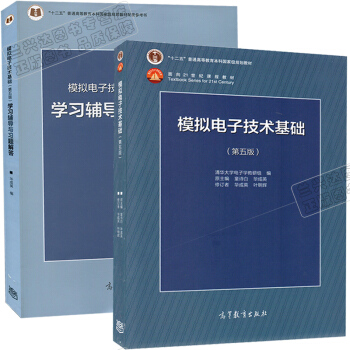

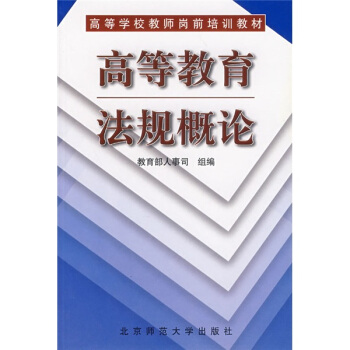
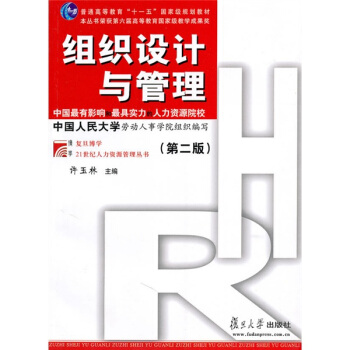
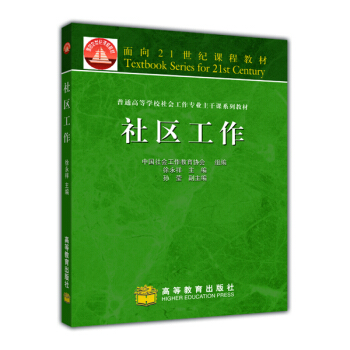
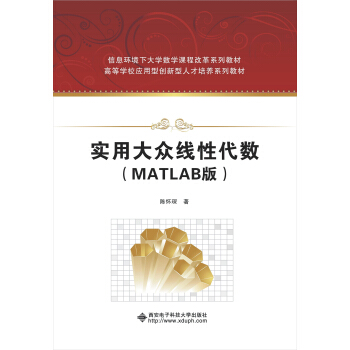
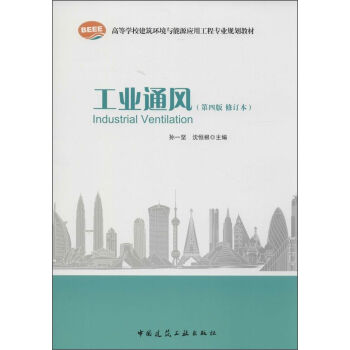
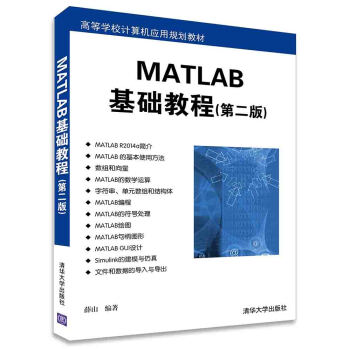

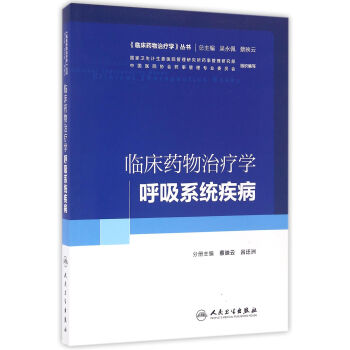
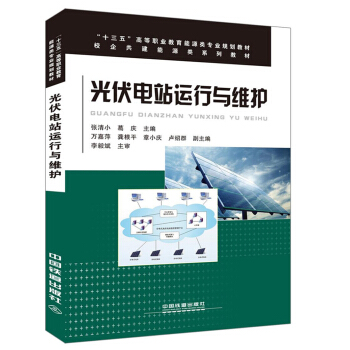
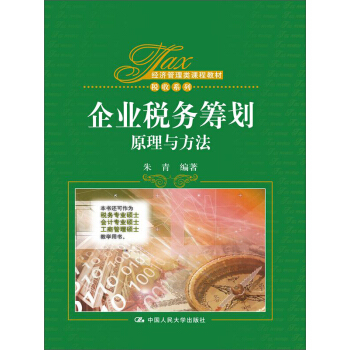


![电机学/清华大学电气工程系列教材 北京高等教育精品教材 [Electric Machinery] pdf epub mobi 电子书 下载](https://pic.tinynews.org/12185648/591c1151N88cc0389.jpg)
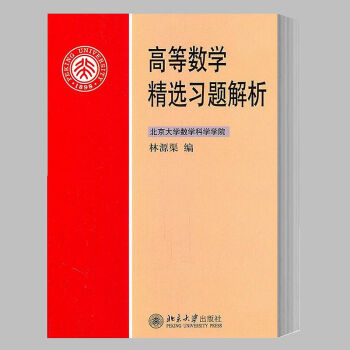
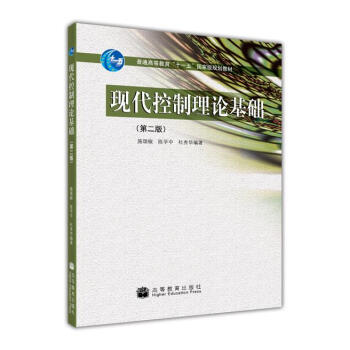
![清华大学土木工程系列教材:混凝土结构有限元分析(第2版) [Finite Element Analysis of Concrete Structures] pdf epub mobi 电子书 下载](https://pic.tinynews.org/11268136/rBEhWlHaiNkIAAAAAAJZ0YEnA0wAAA36gNIYM0AAlnp182.jpg)
